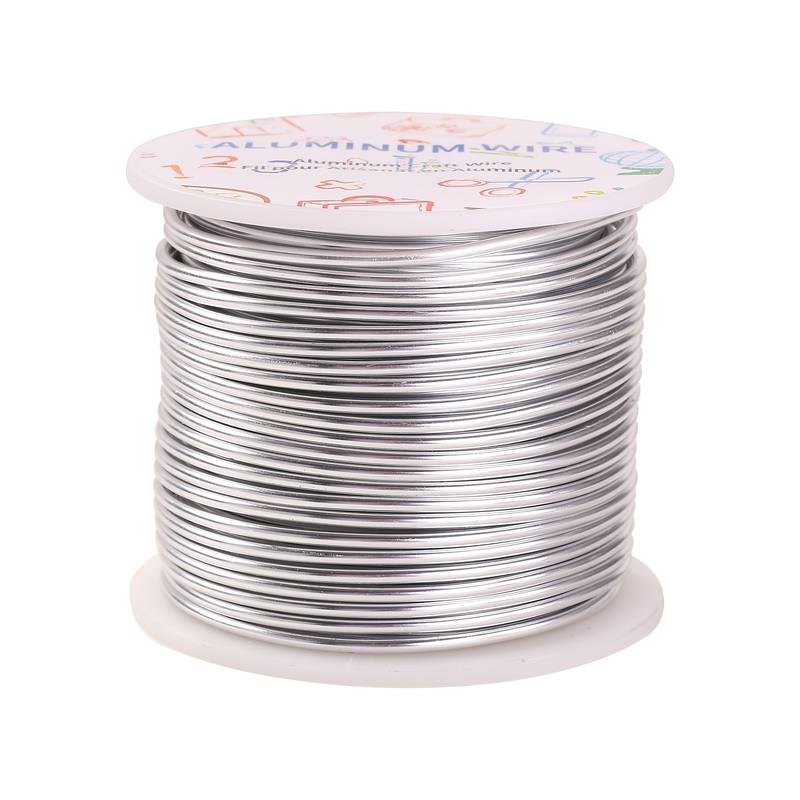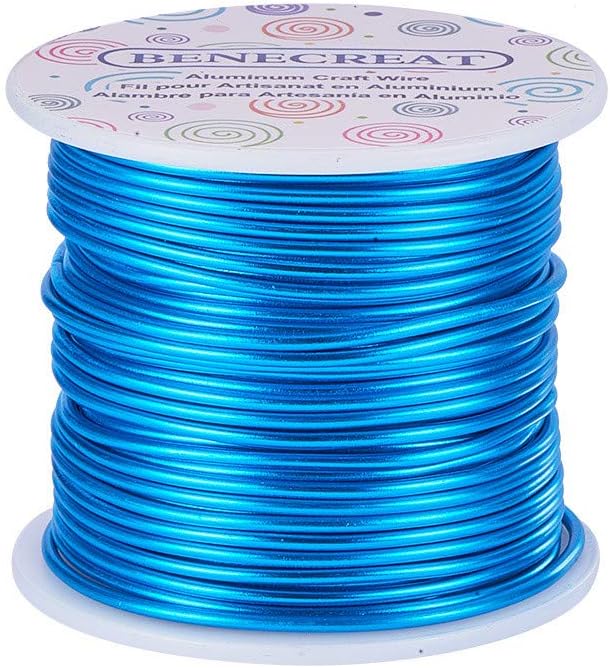3 BEGINNER ESSENTIALS
 The Type of Metal
The Type of Metal
 When to use Coated
When to use Coated
 The Wire Thickness
The Wire Thickness
SAVE YOURSELF TIME
AND MONEY
WITHOUT COMPROMISES!

We’ve heard your questions, and we HAVE THE ANSWERS!
Welcome, fellow antenna-gardening enthusiasts! Today, we’re diving into the fascinating world of “Electroculture Antenna Design” – maximizing your electrical output and therefore your results.
Let’s explore the 3 most important considerations to make when starting out.
>> What materials should you use?
>> Should you use insulated or enameled wire?
>> What wire gauge should you use?
Whether you’re a new Energetic Grower, have been using Electroculture for a few years now, or you’re just someone curious about how these types of energy-collecting antennas work, this blog post is here to shed light on the key factors that can supercharge your antenna’s performance. So, let’s get started!
Unlock the secrets of #Electroculture! Believe it or not, the color of your wire insulation might be subtly influencing your plants' growth. Unleash the power of the unseen. #PlantPower #ColorfulCultivation
DISCOVER YOUR PERFECT METAL
WHICH METAL WIRE REIGNS SUPREME?
Alright, let’s talk about picking the right stuff for your antenna. The materials you choose can play a big role in how well your antenna can stimulate your plants through electroculture.
The usual suspects here are conductive metals like copper and aluminum, thanks to their stellar electrical properties. But don’t be shy to try out other metals too! Copper is a top choice, mainly because it puts up very little resistance and it’s a champ at conducting electricity. This means more efficient energy transfer. Cool, right?
Now, let’s chat about aluminum wire. It’s also a good conductor, but it doesn’t quite hit the mark like copper does. Its resistivity is 60% higher than copper’s, so it’s not the first pick if you’re looking to power up a lot of plants from a single antenna. But here’s the catch – it’s super affordable. So, you might need more antenna elements to match copper’s electricity capture, but the real test is whether your plants dig it.
So, when you’re on the hunt for materials, keep a few things in mind. You want to consider conductivity, how well the material resists corrosion, and of course, your budget. Balance these out to find what’s perfect for your growing setup. If you’re working on a big farm and watching the pennies, aluminum could be your best bet. But for small fancy gardens or pricey crops, copper might be the way to go. And remember, it can also depend on the plants, and there’s a lot of other factors at play. So don’t be afraid to experiment!
COPPER WIRE
TRENDY

- Higher Conductivity
- Best for Homescale Gardens
- Less Corrosive
- More Rigid & Heavy to Install
- Not Available Coloured
ALUMINUM WIRE
EASY

- Easier to Install
- Best for Agricultural Applications
- Available Coloured
- Lower Conductivity
- Corrodes Easier without Enamel
NAVIGATE YOUR WIRE THICKNESS
WHAT’S THE IDEAL WIRE GAUGE FOR YOUR NEEDS?
Alright, let’s dive into the world of Electroculture antennas! You know, the thickness of your wire (or “wire gauge” as the pros call it) can really make a difference in how well your antenna performs.
Here’s the deal: thicker wires, which are actually called lower gauge wires (a bit counterintuitive, I know), give you less resistance and don’t lose as much energy. This means your signal strength, or the power of the electricity it sends out, gets a nice little boost.
But hold on, don’t rush to get the thickest wire yet. Different situations call for different wire thicknesses. You see, there’s this tricky balance between the wire gauge and the range of frequencies it can handle. Some frequencies just vibe better with plants, and while we’re still learning about all this in the realm of radio-frequency antennas, what we do know is that it’s important.
Now, the question that might be popping up in your mind is: how easy is the wire to shape for my needs? That’s a great point! If you’re going for a bit of an artsy look, a thicker wire gives your antenna a stronger presence. If you’re dealing with small plants, a slender wire could be your best friend. Plus, if you’re planning to put up a bunch of antennas over a big area, thinner wires are the way to go. They’re easier to bend, which means you’ll zip through the job a lot faster.
And one more thing – when dealing with higher frequencies, you might want to go for thinner wires. They help to avoid any funky signal distortions. Sounds like a lot? Don’t worry, we’re all here to learn!
WIRE INSULATION & HIDDEN VALUE
WHEN IS IT TIME TO EMBRACE ENAMELED & INSULATED WIRE?
So, let’s talk about something you might not think about when you’re dreaming up your antenna design – insulation. Believe it or not, it’s super important for pumping up your electrical output.
Now, imagine splitting your design into two parts – the antenna and the wire that links it to good old Mother Earth.
Let’s start with the antenna, or as we like to call it, the aerial portion.
You’ve seen those spirals right?
>> That’s where we recommend using non-insulated copper wire or aluminum wire with a thin enamel. Nice and simple.
Now here’s something fascinating. In the realm of electroculture, we’re seeing hints that colored insulation on wires might have subtle effects on how plants grow. This is still under exploration, but the word in the community is that color coated enameled aluminum wire could bring about slight changes in plant shape and form.
Here’s a thought that’s been buzzing around: could the color be triggering different plant growth stages? Like how blue light pushes vegetative growth, and red light nudges flowers and seeds into action? Time and more stories from the field will tell.
Next up is the grounding portion, or the wire that connects the antenna directly to the ground.
This connects your antenna to the Earth or your chosen plants.
>> Here, insulated wire is your friend. It helps keep electrical losses to a minimum. Generally, this is done with a wire wrapped in a protective sheath, and copper is often the go-to choice.
Generally speaking, the skinnier the wire, the thinner the insulation. So, go with the thinnest insulation you can find. Most aluminum craft wire comes with a very thin enamel coating, and that’s just the ticket!
Final Insulation Tip!
To get the best range and effectiveness from the insulated spiral antennas in the ground, be sure to remove the insulation touching the soil! This will ensure that the most electricity possible makes it to the soil & your plant roots!
UNLEASH YOUR CREATIVITY

- Easiest to Install
- Super Flexible
- Great Longevity

Hi there, I'm David
I’ve been experimenting, writing, and creating products for electroculture for over 12 years. I’m also the original creator of the largest electroculture facebook group, Energetic Agriculture! Ray & I are co-founder of Energetic Growers, and my focus is on the science and engineering of highly-effective electroculture systems that can SCALE to any size yard or farm! Also, as a practitioner of energetic healing techniques, my focus is also on blending the technical and the subtle – particularly with helping growers learn how to apply the “energetics” side to their growing endeavors! Follow us and our discoveries in Electroculture and Energetic Agriculture Design!
Interested in unlocking hidden secrets of the universe from the comfort of your backyard or balcony?
the ONE email you'll open every week
Thank you!
You have successfully joined our subscriber list.
The Energetic Agriculture Podcast #13 – The Galaxy Garden #3
In this episode, we complete Ray’s story about the galaxy garden, covering the details of how he pulled it all together! Topics include:– Intention settings
The Energetic Agriculture Podcast #12 – The Galaxy Garden #2
In this episode, we continue Ray’s story about the galaxy garden, touching on dowsing sacred sites (unknown as such at the time), the Etruscans, some

Pyramid Kits!
Leverage Pyramid Energy in Your Own Garden! Leverage the magic of pyramid shape-power for the following activities: Direct plant stimulation Seed stimulation Charging rocks, crystal
The Energetic Agriculture Podcast #11 – The Galaxy Garden
In this episode Ray & I talk about one of his flagship grows, the “Galaxy Garden”, where by taking advantage of intuition-based site selection, ancient
Electroculture… Growing Plants with Electricity?!?!? WTF!
What is Electroculture? Electroculture gardening presents an innovative, captivating approach to nurturing plants that leverages electrical currents to encourage plant growth and increase yield. Though
Build The BEST Spiral Antennas!
Facebook Twitter Reddit 3 BEGINNER ESSENTIALS The Type of Metal When to use CoatedThe Wire Thickness SAVE YOURSELF TIME AND MONEY WITHOUT COMPROMISES! We’ve heard





